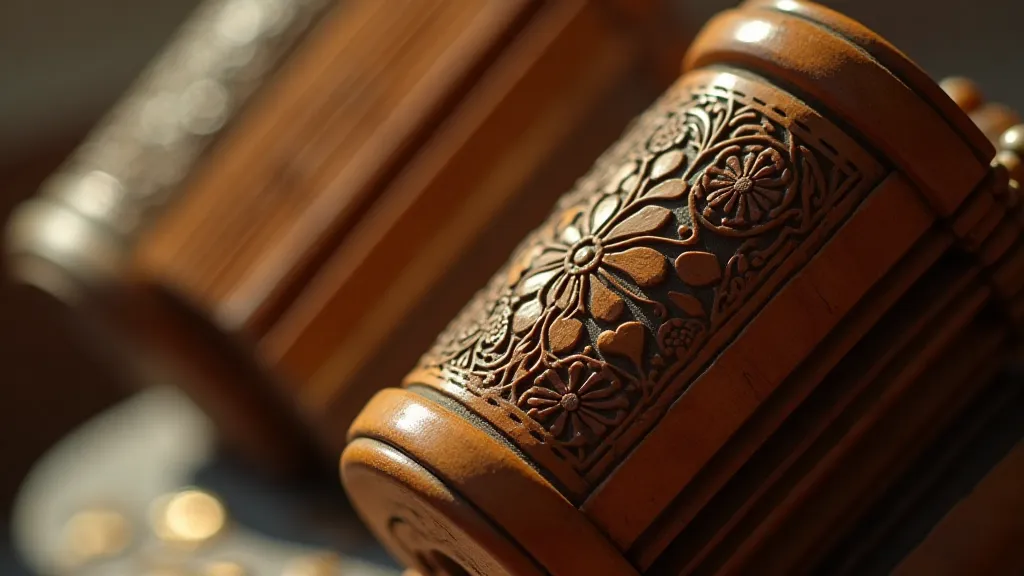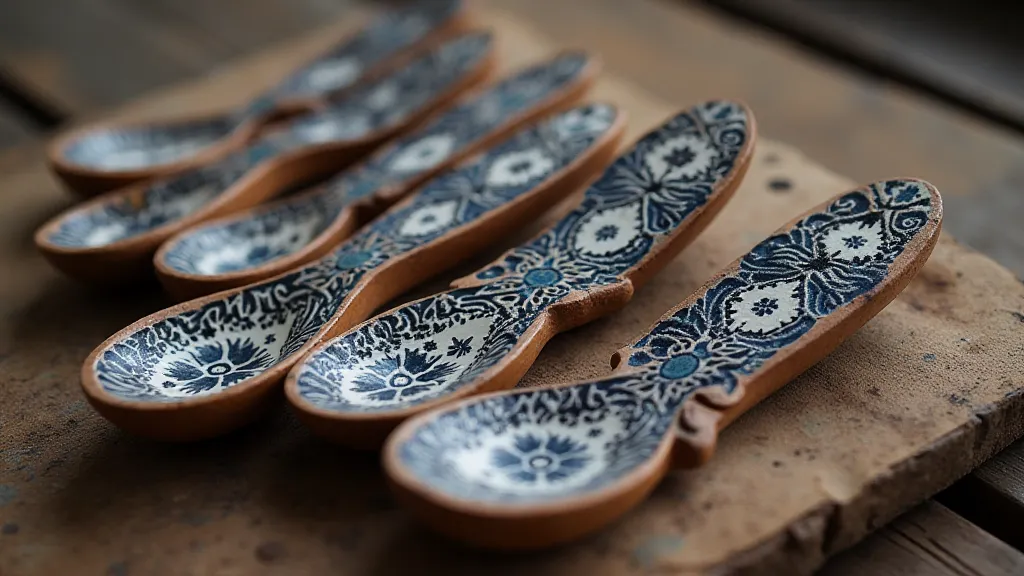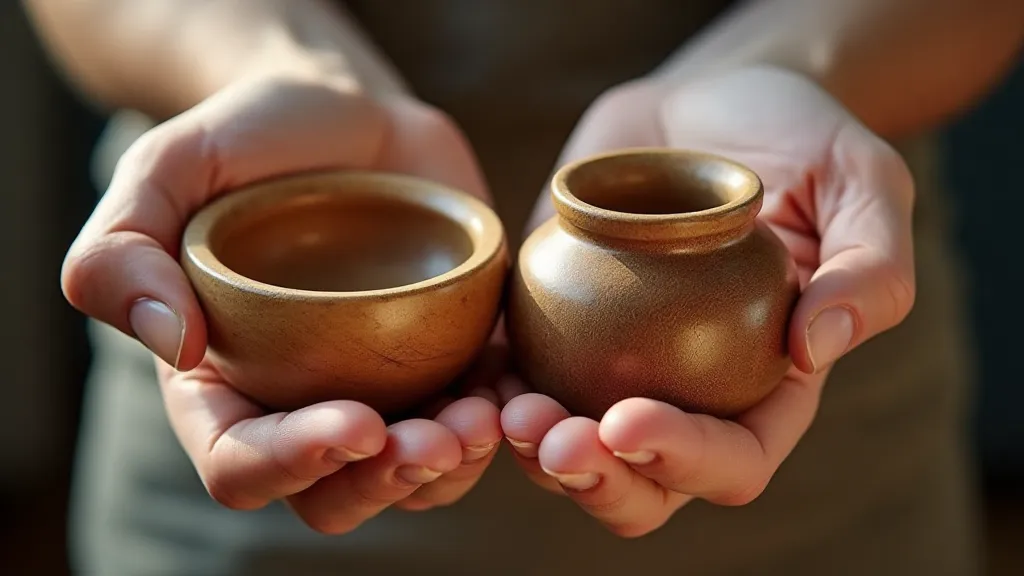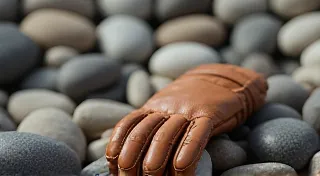Echoing Vessels: The Intersection of Carving and Pottery Traditions
The human impulse to create, to shape the world around us, rarely manifests in isolation. Often, artistic endeavors intertwine, influencing one another in subtle and profound ways. This is particularly evident when considering the traditions of wood carving and pottery. While seemingly disparate – one working with the yielding grain of a tree, the other with the transformative power of earth and fire – a closer look reveals a fascinating dialogue, a cultural pollination where techniques and motifs frequently blurred the lines between these forms of expression. It's a story of shared ancestry, borrowed aesthetics, and the enduring human need to tell stories through tangible form.
My own fascination with this connection began not with a chisel or a potter’s wheel, but with an antique accordion. My grandfather, a taciturn man of few words, played one, his fingers dancing across the buttons and bellows with a practiced grace that hinted at a long-forgotten connection to something deeper. He rarely spoke about its origins, but I remember him once remarking, “It feels… earthen, somehow. Like it grew from the land.” It was a strange thing to say about an instrument crafted from wood, metal, and leather, yet it struck a chord. It planted a seed of inquiry that would eventually lead me to explore the surprisingly close relationship between wood carving and pottery traditions across various cultures.

Ancient Roots: Shared Ancestry
The earliest examples of both pottery and wood carving appear remarkably early in human history, appearing alongside cave paintings and other forms of early symbolic expression. Archaeological evidence suggests that these skills weren’t necessarily developed independently. In many regions, early pottery vessels were often adorned with incised patterns—shallow carvings made directly into the wet clay—before firing. These incised designs frequently mirrored the kinds of geometric patterns and stylized animal forms that were also being carved into wood. Think of the Neolithic pottery from Jōmon period Japan, or the early pottery of the Fertile Crescent; the carved decorations are instantly recognizable as kinship to wood carving motifs.
The reasons for this convergence are complex. Both crafts rely on a fundamental understanding of materials. The potter must understand the plasticity of clay, its shrinkage during firing, and how to create durable forms. The wood carver needs to appreciate the grain direction, the properties of different wood species, and how to work with the natural contours of the tree. This shared understanding fostered a holistic approach to craft, where the potter might borrow visual cues from wood carvings, and the carver might draw inspiration from the organic shapes of vessels.
Cultural Bridges: Regional Examples
Let’s examine a few specific examples where the relationship between wood carving and pottery traditions is particularly illuminating. In Scandinavia, for instance, the tradition of *Rosemåling*, a style of decorative painting on wood, is deeply intertwined with the region’s ceramic traditions. Rosemåling often utilizes stylized floral motifs derived from earlier ceramic designs, and the color palettes often mirror those found on traditional pottery glazes. The flowing lines and organic forms, initially expressed in clay, found a vibrant new life on wooden furniture and decorative objects.
Moving eastward to Russia, particularly in areas like the Volga region and Siberia, we find a similar pattern. Wooden spoons, bowls, and other utilitarian objects are frequently carved with intricate designs that echo the patterns found on traditional Russian pottery, *Gzhel*. Gzhel pottery is characterized by its striking blue and white geometric patterns, and these same motifs—spirals, diamonds, stylized birds—appear frequently on wooden spoons and other carved objects. The use of similar imagery suggests a shared cultural language, a way of communicating ideas and beliefs through tangible forms. The wooden objects weren’t just tools; they were visual narratives, echoing the stories and legends depicted on pottery.

Consider also the indigenous peoples of the Pacific Northwest coast of North America. Their art is arguably the most dramatic example of this intertwined tradition. Elaborate totem poles, meticulously carved from massive cedar trees, serve as visual narratives, conveying family histories, clan affiliations, and spiritual beliefs. The stylistic conventions of these carvings – the stylized animal forms, the layered designs – bear a striking resemblance to the patterns found on traditional Pacific Northwest Coast pottery. Indeed, the two forms often complemented one another: pottery providing the utilitarian function, the totem poles serving as monumental, enduring statements of cultural identity.
Technique and Motif: Cross-Pollination
The influence wasn’t just visual; it extended to technique as well. In some cultures, the potter might employ carving tools—often the same tools used by wood carvers—to create intricate patterns directly into the clay before firing. Conversely, wood carvers might adopt techniques used in pottery to achieve certain effects. For example, the practice of “sgraffito,” where a layer of contrasting clay is applied to a vessel and then scratched away to reveal the underlying clay body, found an equivalent in wood carving through the use of incising tools to create contrasting lines and textures.
Furthermore, the concept of repetition and modularity, so crucial to both pottery and wood carving, facilitated the cross-pollination of motifs. Repeating patterns could be easily translated from one medium to another, allowing for the creation of complex and visually compelling designs. The human instinct for order and symmetry found expression in both forms, resulting in a shared visual vocabulary.
A Lasting Legacy: The Enduring Connection
The intersection of wood carving and pottery traditions offers a fascinating window into the interconnectedness of human creativity. It demonstrates how artistic practices rarely develop in isolation, but rather evolve through a process of dialogue, adaptation, and mutual influence. While the specific forms and styles may vary from culture to culture, the underlying principles remain the same: a deep respect for materials, a desire to create beauty, and a need to communicate stories and beliefs through tangible form.

My grandfather’s accordion, with its earthy feel and subtle floral carvings, serves as a constant reminder of this enduring connection. It’s a tangible link to a past where artistic boundaries were less defined, where the potter and the carver were both artisans, shaping the world around them with skill, creativity, and a profound understanding of the materials at their disposal. Exploring these intertwined traditions isn’t just about appreciating beautiful objects; it's about understanding the richness and complexity of human creativity and the enduring power of shared cultural heritage.





